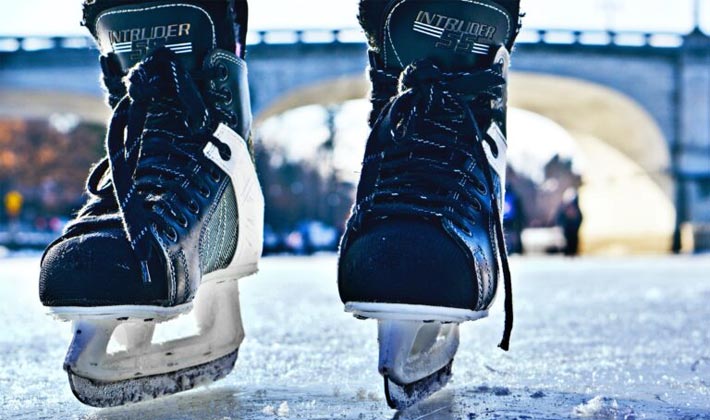Winter is a time for enjoying all that nature has to offer. Spend some time enjoying the quietness of the forest as you ski or snowshoe or maybe spend the day at the ski hills carving curves and feeling the wind race by your face. People of all ages love the thrill of racing down a snowy hill then working to climb back up for another round down.
No matter the activity, if your feet need some extra support or cushioning a custom orthotic can be made to work with your feet and fit in the appropriate footwear.
Skates and ski boots require a lower profile orthotic that has a shape that reflects the contours of the inside of the footwear. Because skates and ski boots generally have a firm/stiff boot they act differently then your regular day to day footwear. Having orthotics made specifically for this type of footwear means you can put them in and leave them there. In addition to the unique fit requirements, the actions that your feet perform inside skates or ski boots can be very different from those in your street shoes and the orthotics may require different specifications.

Your Canadian Certified Pedorthist will ask you to bring in your skates or ski boots to your initial assessment and when fitting the orthotics. Some pedorthists are also skilled in modifying your winter sports footwear for things like bony prominences. In most cases you’ll need to have your custom orthotics made specifically for your skates and ski boots as it is unlikely that they will be interchangeable to other footwear like running shoes or sandals.
Outdoor activities such as cross-country skiing and snowshoeing will likely have you on your feet for hours, so it is important to remember that your feet require proper support, even when you are not in your regular day-to-day shoes. You may be able to use the same orthotics that fit in your running shoes in your winter boots that you may wear when snowshoeing. Your feet and legs will thank you for helping them work as efficiently as they can by choosing boots that provide ankle support and have a strong shank to give your midfoot adequate support. It is also always important that your feet stay dry, this helps keep them warm too. For your cross-country ski boots you can check for a removeable insole so that you can fit your off the shelf or custom orthotics inside. If there is not a removable footbed then try out a ¾ length insole that doesn’t require as much room to fit in and will still offer you great support.
Another important piece of the puzzle is your socks. Be sure to choose natural fibers such as cotton, or even better wool, to help keep your feet dry. Synthetic materials allow moisture to sit against the skin and cause them to feel cold sooner. Compression socks help to keep the blood flowing properly from your heart to your limbs and because of this they help keep feet warm.
Canadian Certified Pedorthists will talk to you about your lifestyle and educate you on the best ways to keep your feet and legs supported while being active this winter season. Looking for a Canadian Certified Pedorthist in your area? Want comfortable feet this outdoor season? Begin your search here.
By: Jasmine Basner, C. Ped (C)
